Amazing Jungle Birds of the Rainforest (With Pictures)
Explore the Amazing Jungle Birds of the Rainforest! Rainforests are one of the most vibrant ecosystems on Earth, bursting with life and color. Among the lush foliage and towering trees lurk some of nature’s most fascinating creatures—the jungle birds of the rainforest. These feathered wonders contribute to the rich biodiversity and play crucial roles in their habitats, from pollination to seed dispersal. Whether you’re an avid birdwatcher or simply curious about wildlife, exploring these winged marvels can be a thrilling experience.
From strikingly colorful toucans to delicate hummingbirds, each species offers a unique glimpse into the intricate web of life within rainforests across the globe. Join us as we delve deeper into this captivating world, uncovering different types of rainforests and guiding you through identifying some common—and extraordinary—jungle birds that call these enchanting places home. Let’s embark on this avian adventure together!
Types of Rainforests around the World
Rainforests are categorized mainly into two types: tropical and temperate.
1. Tropical Rainforests
Tropical rainforests are found in the equatorial regions between the Tropic of Cancer and the Tropic of Capricorn. They are characterized by high temperatures, high humidity, and heavy rainfall throughout the year. Due to their dense vegetation and diverse animal life, these forests are also known as “jungles.”
Some examples of tropical rainforests include:
Amazon Rainforest: Located in South America, it is the largest tropical rainforest in the world covering an area of about 5.5 million square kilometers.
Congo Rainforest: Also known as the “Heart of Africa,” it is the second-largest tropical rainforest in the world, covering an area of about 3 million square kilometers.
Southeast Asian Rainforests: These rainforests are home to many plant and animal species and are found in countries like Indonesia, Malaysia, and Papua New Guinea.
Daintree Rainforest: Located in Australia, it is one of the oldest surviving tropical rainforests in the world, dating back over 135 million years.
2. Temperate Rainforests
Temperate rainforests are found further away from the equator, mainly along coastal regions with cool summers
Tropical rainforests thrive near the equator, where temperatures remain warm throughout the year. They boast incredible biodiversity, supporting countless species of plants and animals that rely on consistent rainfall.
On the other hand, temperate rainforests exist in cooler coastal regions. These forests experience milder climates with distinct seasons yet still receive substantial precipitation. While they may not have as many species as their tropical counterparts, they host unique flora and fauna adapted to their specific environments.
Each rainforest type plays a vital role in maintaining ecological balance. By understanding these differences, we can appreciate our planet’s diverse ecosystems and recognize why preserving them is crucial for future generations.
Characteristics and Adaptations of Jungle Birds
Jungle birds possess remarkable characteristics that enable them to thrive in dense rainforest environments. Their vibrant plumage often serves two purposes: attracting mates and camouflaging with the colorful flora around them.
Many species have developed strong, curved beaks for accessing hard-to-reach food sources like fruits and nuts. This adaptation is essential for survival in a habitat where resource competition can be fierce.
Additionally, their agile bodies allow them to effortlessly navigate through thick canopy layers. Long tails and lightweight frames aid in swift aerial maneuvers, making it easier to evade predators.
Unique vocalizations are another distinct feature of jungle birds. These calls communicate territory and attract potential mates amid the cacophony of rainforest sounds. The ability to mimic other species’ calls enhances their chances of thriving within this complex ecosystem.
Identification Guide: Common Rainforest Birds to Look For
Several species stand out when exploring the vibrant world of jungle birds in the rainforest due to their striking colors and unique behaviors.
Toucans are hard to miss, with their oversized, colorful bills helping them reach fruit high in the canopy. Their loud calls echo through the trees, making them a delightful sight.
Hummingbirds flit about like tiny jewels, showcasing iridescent feathers as they hover near flowers. Their rapid wingbeats create a soft hum that’s enchanting to hear.
Macaws exhibit brilliant plumage and are often spotted squawking noisily as they fly in pairs or small groups. They love socializing and can be quite playful.
Parrots display remarkable intelligence along with vivid coloration. Look for them hanging upside down or mimicking sounds from their surroundings.
Owls provide an air of mystery at night, blending into foliage while scanning for prey with keen eyes. Each bird has its distinct charm that adds life to this lush ecosystem.
1. Toucans
Toucans are one of the most recognizable jungle birds of the rainforest, thanks to their vibrant colors and oversized beaks. These striking avians often sport bright yellow, orange, or red feathers that stand out against the lush greenery.
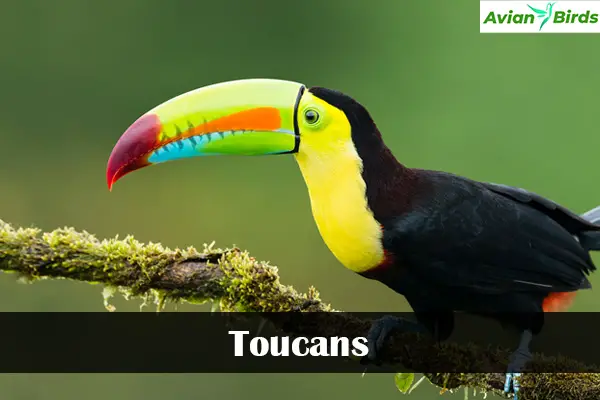
Their large bills serve multiple purposes. They use them to reach fruit high in trees, which is a primary component of their diet. Surprisingly lightweight for their size, toucan beaks also help with thermoregulation by dissipating heat.
Toucans are social birds and usually travel in small groups. Their playful nature makes them fascinating to observe as they interact with each other amidst the treetops.
They play a crucial role in seed dispersal within their habitat. Consuming fruits and later excreting seeds elsewhere contributes significantly to maintaining forest growth and diversity. Spotting a toucan among the foliage can easily become a highlight of any rainforest adventure!
2. Hummingbirds
Hummingbirds are among the most enchanting residents of the rainforest. With their iridescent plumage and rapid wing beats, they bring life to any canopy.
These tiny birds can hover in mid-air, thanks to their unique wing structure. Their hearts beat incredibly fast—up to 1,200 times per minute during flight! This astonishing energy allows them to dart from flower to flower with incredible agility.
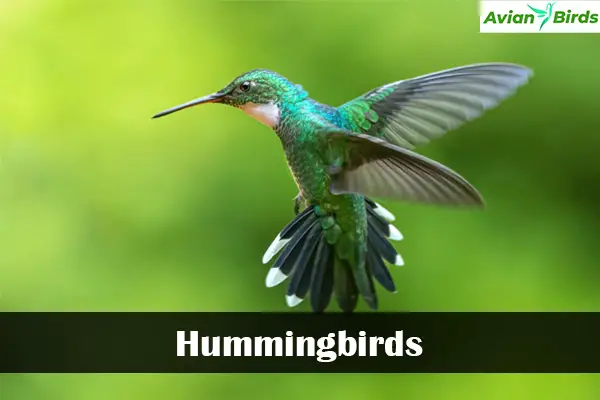
What sets hummingbirds apart is their long, specialized bills designed for sipping nectar. Many species play a crucial role in pollination, helping plants reproduce while enjoying their sweet rewards.
Rainforest habitats offer abundant flowering plants that attract these vibrant creatures year-round. Spotting one can feel like catching a glimpse of magic amid the dense foliage.
Their colors vary widely across species—from deep greens and blues to striking reds and purples—making every sighting a breathtaking experience for birdwatchers and nature lovers alike.
3. Macaws
Macaws are among the most colorful and intelligent birds found in the rainforest. Their vibrant plumage can range from deep blues to fiery reds, making them a true spectacle of nature. With long tails and strong beaks, they’re beautiful and well-adapted for life high up in the trees.
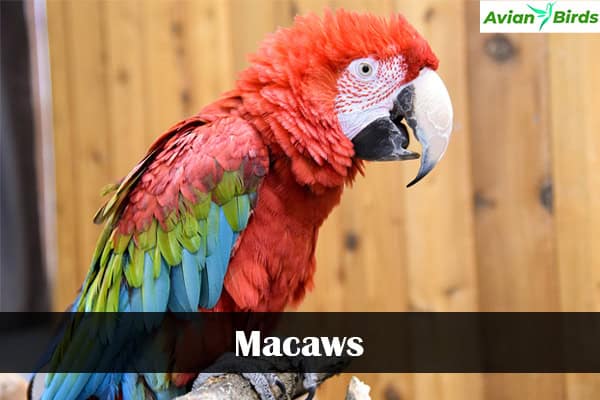
These social creatures often travel in pairs or small groups. They communicate loudly with their squawking calls, which echo through the dense foliage. This vocalization plays an essential role in maintaining their bonds and establishing territory.
Macaws primarily feast on fruits, nuts, and seeds. Their powerful beaks allow them to crack open hard shells with ease. Spotting one perched against a backdrop of lush green leaves is always a treat for birdwatchers.
Unfortunately, habitat loss poses significant threats to macaw populations across many regions. Conservation efforts are crucial to ensuring these magnificent birds continue soaring through the rainforests for generations to come.
4. Parrots
Parrots are among the most vibrant of jungle birds, showcasing a dazzling array of colors. From the vivid greens and blues to striking reds and yellows, their plumage is spectacular.
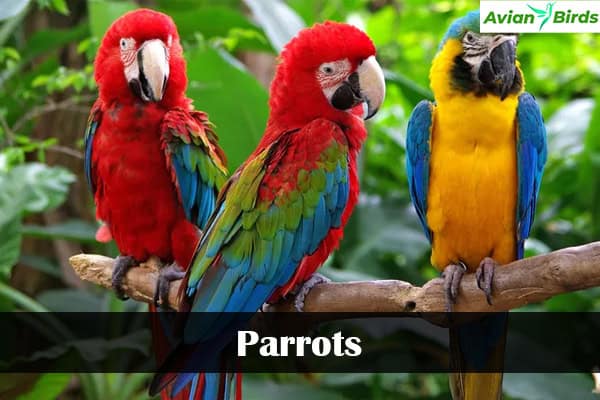
These intelligent creatures are known for their remarkable vocal abilities. Many can mimic sounds they hear in their environment, including human speech. This talent makes them popular pets but also highlights their complex social nature.
In rainforests, parrots often travel in flocks. This behavior not only enhances safety from predators but also fosters strong social bonds within groups. Their diet mainly consists of fruits, nuts, and seeds.
With powerful beaks designed to crack open tough shells and access hidden food sources, parrots play a vital role in seed dispersal. As they feed on fruit-bearing trees, they help maintain the health of their ecosystem by spreading seeds throughout the forest floor.
5. Owls
Owls are fascinating nocturnal hunters found in various rainforests around the globe. With their keen eyesight and exceptional hearing, they easily navigate the dark.
These birds of prey have unique adaptations that make them formidable night-time predators. Their silent flight is due to specialized feather structures that reduce turbulence, allowing for stealthy approaches.
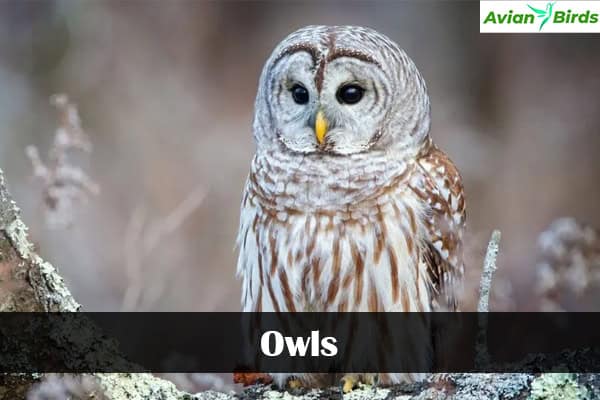
Among rainforest owls, the Spectacled Owl stands out with its striking facial markings resembling glasses. It primarily feasts on small mammals and insects, showcasing versatility in its diet.
Another captivating species is the Great Horned Owl, known for its tufted “horns” and powerful presence. This owl often roosts high in tree canopies during the day before emerging under cover of darkness.
Owls control rodent populations, which is crucial for maintaining ecological balance. Spotting these elusive creatures adds excitement to any jungle expedition.
Other Interesting Rainforest Bird Species
Beyond the iconic toucans and macaws, the rainforest has remarkable bird species. One such gem is the Resplendent Quetzal. With its vibrant plumage and long tail feathers, this bird embodies beauty in motion as it flits through dense foliage.
Another captivating resident is the Harpy Eagle. This powerful raptor reigns supreme in the treetops, preying on monkeys and sloths with its impressive talons. Its sheer size and striking appearance make it a sight to behold.
The Songbird family also shines brightly here. Species like the Manakin dance their way into hearts with elaborate courtship displays that are as entertaining as they are mesmerizing.
Consider the unique Hoatzin, known for its peculiar digestive system that allows it to ferment leaves! These birds are unmistakable in their lush environment, showcasing nature’s endless creativity.
Threats and Conservation Efforts for Rainforest Birds
Rainforest birds face numerous threats that jeopardize their survival. Habitat destruction is the most pressing issue, as logging and agriculture convert lush forests into barren land. This loss disrupts nesting sites and food sources.
Climate change also poses a significant risk. Alterations in temperature and weather patterns affect migration routes and breeding cycles. Many species struggle to adapt to these rapid shifts.
Conservation efforts are vital for protecting these vibrant avian populations. Organizations focus on habitat restoration, replanting native trees and creating protected areas. Education plays a crucial role too; raising awareness about the importance of preserving bird habitats can inspire action at local levels.
Additionally, some initiatives promote sustainable practices among communities reliant on forest resources. By balancing economic needs with ecological health, we can create a safer haven for jungle birds of the rainforest.
Tips
When exploring the rainforest, bring a good pair of binoculars. This will help you spot jungle birds from a distance without disturbing them.
Dressing in neutral colors is essential. Bright clothing can scare off shy species that might otherwise come into view.
Visit at dawn or dusk. These times offer the best chances to see active birds as they search for food or settle down for the night.
Keep quiet and be patient. Birds are easily startled by loud noises, so take it slow and let nature reveal its wonders.
Bring a field guide specific to your region’s birds. This resource can enhance your experience by helping you identify various species on the go.
Remember to document your sightings! A simple notebook or app can track what you’ve seen and keep memories alive long after you’ve left the lush canopy behind.
Our Recommended Articles:
- Woodpecker Spiritual Meaning
- Bird Symbolism & Meanings
- Blue Plymouth Rock Chicken Breed
- Top Blue Parrot Species
- Types of Conures
Conclusion
The rainforest is a vibrant ecosystem teeming with life, and its birds play a crucial role in maintaining the balance of their environment. Each species brings unique beauty and diversity to these lush habitats, from the colorful toucans to the iridescent hummingbirds. Understanding jungle birds enhances our appreciation for nature and highlights the importance of conservation efforts.
As we continue to explore rainforests across various continents, let’s look out for these feathered wonders. With threats like habitat destruction looming, it becomes increasingly vital to support initiatives aimed at protecting both birds and their environments.
Whether you’re a seasoned birdwatcher or simply curious about wildlife, there’s always something new to discover among jungle birds of the rainforest. The more we learn about them, the better equipped we are to advocate for their survival and ensure that future generations can enjoy their magnificence too.







